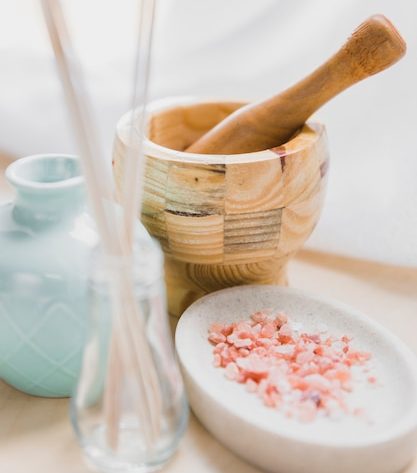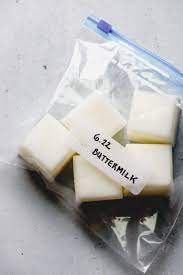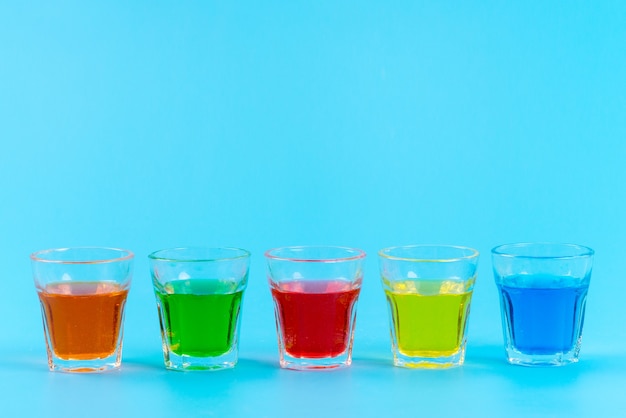Best Substitutes for Baking Soda in Your Kitchen
In the culinary world, certain ingredients play a pivotal role in achieving the desired texture and flavor of various dishes. While some of these elements are commonly found on pantry shelves, there are instances when they may be unavailable. This can prompt chefs and home cooks alike to seek out alternatives that can deliver similar results. Understanding these replacements can enhance your cooking experience and open up new avenues for experimentation.
Choosing the right component can make a significant difference in the outcome of your recipes. Each substitute has its unique properties, and knowing how to select and use them effectively can transform your dishes without compromising taste. From baked goods to savory meals, the right alternative can help maintain the integrity of your culinary creations.
As we explore various options, it’s important to consider the science behind these ingredients and how they interact with other elements in your recipes. With the right knowledge, you’ll be equipped to tackle any cooking challenge that comes your way, turning potential setbacks into opportunities for creativity and innovation.
Understanding Baking Soda’s Role
In the realm of culinary arts, certain ingredients play critical roles in achieving desired results in recipes. One such component is essential for creating texture, influencing flavor, and facilitating rise in baked goods. Grasping its importance is crucial for both novice and experienced chefs.
This agent serves as a leavening agent, prompting dough and batters to expand and become light and fluffy. Its chemical properties interact with various ingredients to produce carbon dioxide gas, which in turn boosts the mixture’s volume.
Here are some key functions it fulfills:
- Leavening: It helps baked items rise by releasing gas bubbles.
- Flavor Enhancement: It balances acidity in certain recipes, improving overall taste.
- Texture Improvement: Contributes to a tender crumb by altering the structure of proteins.
- Moisture Retention: Aids in keeping baked goods moist for a longer period.
Understanding how this ingredient interacts with other components in recipes empowers cooks to make informed choices and achieve consistent results. Knowledge of its role prepares culinary enthusiasts to adjust recipes appropriately when alternatives are needed.
Common Substitutes for Baking Soda and Baking Powder
When it comes to leavening agents in cooking and baking, alternatives can be lifesavers. Whether you’re out of a specific ingredient or looking for a different flavor profile, various options can effectively replace your usual choice. Understanding these alternatives can enhance your culinary creations and make your recipes more versatile.
Powdered Fermenting Agent
One popular alternative is a powdered fermenting agent, commonly known for its dual-action properties. This ingredient releases carbon dioxide when combined with moisture and heat, providing similar lift to baked goods. When using this option, the typical ratio is about double the amount compared to the original measurement for optimal results.
Yogurt or Buttermilk
Another interesting choice lies in using yogurt or buttermilk. These dairy products introduce acidity, which interacts beautifully with baking powder to create a light and fluffy texture. It’s advisable to reduce any liquid in your recipe slightly when incorporating these moist ingredients to maintain the right balance. Generally, one cup of yogurt or buttermilk could replace approximately one teaspoon of your original agent.
Why You Might Need Alternatives
There are several scenarios in which you may find yourself in search of substitutes for a common leavening agent. Understanding these situations can help ensure that your culinary endeavors remain successful, even when ingredients are not available. Whether due to dietary restrictions, personal preferences, or simply the unavailability of certain items, exploring various options can enhance your cooking skills.
Common Reasons for Seeking Options
- Dietary Restrictions: Some individuals may have allergies or intolerances that prevent them from using traditional ingredients.
- Ingredient Availability: Not every kitchen is stocked with the same items, leading to the need for alternatives.
- Flavor Preferences: Certain recipes may benefit from different flavors or textures that substitutes can provide.
- Culinary Experiments: Innovating in the kitchen can lead to discovering new and exciting combinations.
Potential Benefits of Exploring Variations
- Enhanced Creativity: Using different components allows for experimentation and unique flavor profiles.
- Healthier Options: Some alternatives may offer more nutritional benefits, appealing to health-conscious cooks.
- Improved Shelf Life: Certain substitutes may have a longer shelf life, reducing waste and improving sustainability.
- Adaptability: Learning about various substitutes makes one adaptable in the kitchen, boosting confidence.
Vinegar: An Effective Replacement
When seeking alternatives for a common leavening agent, one often overlooked option is an acidic liquid that reacts with alkaline components in recipes. This interaction not only promotes rising but also enhances flavor profiles, making it a valuable addition to the kitchen.
Utilizing this liquid in various culinary applications can yield impressive results. Its ability to create bubbles when combined with specific ingredients helps replicate the desired texture in baked goods, especially in scenarios where traditional leaveners might be absent.
| Ingredient | Amount | Notes |
|---|---|---|
| Vinegar | 1 teaspoon | Typically combined with baking powder or baking mix |
| Vinegar | 1 tablespoon | Can replace 1 teaspoon of cream of tartar for stabilization |
| Vinegar | ½ cup | Used in moist cakes to enhance tenderness |
Incorporating this liquid not only aids in achieving the desired rise but also contributes to the overall taste and texture of the final product. Whether making cakes, muffins, or other delightful treats, this option proves to be both convenient and effective in baking. Experimenting with various types of the liquid, such as apple cider or white, can also offer unique flavors to your creations.
Using Cream of Tartar Wisely
Cream of tartar, a versatile ingredient found in many kitchens, serves multiple purposes beyond its traditional uses. Understanding how to implement this compound can elevate various recipes, enhancing textures and flavors while achieving desired results. Its unique properties make it an excellent addition to certain dishes, particularly those requiring stability or acid-base reactions.
Stabilizing Egg Whites
One of the standout attributes of cream of tartar is its ability to stabilize egg whites. When whipping egg whites for meringues or soufflés, adding a small amount of this powder can help create a more stable foam. This stability allows for better volume and a silkier texture, important for achieving that perfect finish in your treats. Aim for about 1/8 teaspoon per egg white to see noticeable improvements.
Enhancing the Flavor
This ingredient is not just a functional additive; it also plays a role in enhancing the overall flavor profile of certain dishes. When used in recipes like cakes or frostings, it imparts a subtle tanginess that can balance sweetness and create a more rounded taste. Additionally, combining it with baking powder can boost leavening, leading to a lighter, fluffier texture and a delightful eating experience.
Exploring Yeast as a Leavening Agent
Yeast is a remarkable organism that has been harnessed in culinary arts for centuries, primarily for its unique ability to create lightness and fluffiness in various baked goods. This microscopic fungus ferments sugars, producing carbon dioxide and alcohol as byproducts, which contribute to the rising process in dough. Its application in recipes ranges from bread and rolls to pastries and even certain desserts, making it an essential ingredient in many kitchens.
The fermentation process initiated by yeast not only adds volume but also enhances the flavor and texture of baked items. This natural leavening mechanism results in a delightful, airy crumb that is often sought after in traditional recipes. Different types of yeast, such as active dry, instant, and fresh yeast, each offer their unique characteristics, providing bakers with flexibility in terms of convenience and results.
It is important to understand how to properly activate and incorporate yeast into mixtures, as factors like temperature, moisture, and time play crucial roles in its effectiveness. By nurturing yeast and allowing it to work its magic, home bakers can achieve exquisite results, elevating their creations to new heights of taste and enjoyment.
Natural Alternatives from Your Pantry
When you find yourself in the midst of preparing a dish, and realize a key ingredient is missing, look no further than your pantry for effective solutions. Several common items can serve as excellent replacements, ensuring your culinary creations remain delicious and fluffy without the need for specialized products. Here, we explore a variety of household staples that can enhance your recipes just as well.
Vinegar and Lemon Juice
Acidic fluids such as vinegar or lemon juice can provide a fantastic option. When combined with a baking powder or other flour mixtures, they can create a chemical reaction that produces carbon dioxide, leading to a light texture. Use about one tablespoon of either liquid for every teaspoon of the missing ingredient to achieve optimal results.
Plain Yogurt or Buttermilk
Dairy products like plain yogurt and buttermilk are also invaluable. Their natural acidity not only pairs beautifully with other components but also contributes the necessary rise for baked goods. For a seamless integration, substitute one cup of yogurt or buttermilk for one cup of the omitted ingredient, adjusting hydration in recipes as needed.
Q&A: Best baking soda substitutes
What can I use as a substitute for baking soda if I don’t have any at home?
If you find yourself without baking soda, there are several suitable substitutes you can consider. One of the most common alternatives is baking powder; it’s a leavening agent that typically contains both baking soda and an acid, so you’ll want to use about three times the amount of baking powder as baking soda. For example, if your recipe calls for 1 teaspoon of baking soda, you can substitute it with 3 teaspoons of baking powder. Keep in mind that this may slightly alter the taste of your baked goods, as baking powder has a slightly different flavor profile.
Can I use vinegar as a substitute for baking soda, and how does it work?
Yes, vinegar can be used as a substitute for baking soda when combined with an alkaline ingredient. Since baking soda is a base, it reacts with acids to produce carbon dioxide, which helps baked goods rise. To use vinegar as a substitute, you can mix 1 tablespoon of vinegar with a teaspoon of baking powder or another alkaline ingredient to create a similar effect. Just remember that using vinegar will impart a slight tangy flavor to your recipe, so it’s best suited for recipes where this flavor would be complementary, like in certain cakes or muffins.
What happens if I don’t use any leavening agent at all in my baking?
Skipping the leavening agent, like baking soda or baking powder, can significantly impact the texture and rise of your baked goods. Without a leavening agent, your cakes, cookies, or breads will likely turn out dense, heavy, and flat instead of light and fluffy. The leavening agent is crucial for creating air pockets within the batter or dough, which is what allows baked goods to rise and achieve that desirable texture. If you don’t have any substitutes on hand, it’s best to rethink the recipe or delay baking until you can restock on leavening agents.
Are there any health considerations to keep in mind when using substitutes for baking soda?
Yes, when using substitutes for baking soda, it’s important to consider any dietary restrictions or health issues. For instance, baking powder typically contains sodium, so if you are watching your salt intake, you might want to limit its use. Additionally, some alternatives, like self-rising flour (which contains baking powder), can also contain added sodium. If you have allergies, be cautious with ingredients like cream of tartar or vinegar, which can cause reactions in sensitive individuals. Always read labels to ensure that any substitute you choose aligns with your dietary needs.
Is there a natural way to replace baking soda in recipes for a more wholesome option?
Yes, there are natural alternatives to baking soda that can be used in your baking. One popular option is yeast, which can be a more wholesome leavening agent. While yeast requires more time to activate and rise, it produces a unique flavor and texture in bread and rolls. Another option is using buttermilk or yogurt, as they contain natural acids that can react with baking powder to create leavening. You would typically replace baking soda with 1 cup of buttermilk or yogurt and then reduce the liquid in the recipe accordingly. Just remember that these options might change the flavor and texture of your final product, so it’s always good to experiment a bit!
What are some effective substitutes for baking soda in recipes?
Some effective substitutes for baking soda include baking powder, potassium bicarbonate, and creamy tartar. Baking powder contains both an acid and a base, so it can be used in recipes that already have an acidic component, or it can replace baking soda on a one-to-one basis if the recipe is not reliant on an acidic ingredient. Potassium bicarbonate is another alternative that can be used in equal amounts as a baking soda substitute; it’s especially useful for those looking to reduce sodium intake. Cream of tartar can be combined with baking powder or used in certain recipes where a leavening agent is necessary. If you need a precise conversion, remember that 1 teaspoon of baking soda can typically be replaced with 2-3 teaspoons of baking powder.
What is the best way to substitute baking powder if you don’t have any on hand?
If you don’t have baking powder, you can use a combination of baking soda and cream of tartar. For every teaspoon of baking powder called for in the recipe, use 1/4 teaspoon of baking soda and 1/2 teaspoon of cream of tartar.
Can you use club soda as a substitute for baking powder?
Yes, you can use club soda as a substitute for baking powder in some recipes. The carbonation in club soda can help leaven baked goods, but it’s not a perfect substitute. You may need to adjust other ingredients to achieve the desired texture.
What is the difference between baking soda and baking powder in baking?
Baking soda and baking powder are both leavening agents but work differently. Baking soda, or sodium bicarbonate, requires an acid to activate, while baking powder contains both an acid and a base and only needs moisture to activate.
How much baking powder should you use if substituting for baking soda?
When substituting baking powder for baking soda, use about three times the amount of baking powder as baking soda. For example, if the recipe calls for 1 teaspoon of baking soda, use 3 teaspoons of baking powder.
What is the best substitute for baking soda in chocolate chip cookies?
If you don’t have baking soda for chocolate chip cookies, you can use baking powder instead. Use three times the amount of baking powder as the recipe calls for in baking soda. For instance, if the recipe requires 1 teaspoon of baking soda, use 3 teaspoons of baking powder.
How can you use sodium bicarbonate in baking if you don’t have baking powder?
Sodium bicarbonate, also known as baking soda, can be used in place of baking powder if you add an acid, like vinegar or lemon juice, to the recipe. Typically, use 1/4 teaspoon of baking soda plus 1/2 teaspoon of acid for every teaspoon of baking powder needed.
What should you do if a recipe calls for baking powder but you only have baking soda?
If a recipe calls for baking powder but you only have baking soda, you can make a substitution by using baking soda along with an acid. Use 1/4 teaspoon of baking soda plus 1/2 teaspoon of an acid like lemon juice or vinegar for every teaspoon of baking powder.
How does baking powder affect the rise of cookies and cakes?
Baking powder helps cookies and cakes rise by producing carbon dioxide gas when it reacts with moisture and heat. This gas forms bubbles in the batter, causing it to expand and become light and fluffy.
Can you use baking soda instead of baking powder for pancakes?
You can use baking soda instead of baking powder for pancakes, but you will need to include an acid in the recipe, such as buttermilk or yogurt, to activate it. Use 1/4 teaspoon of baking soda plus 1/2 cup of acid for each cup of flour.
What are some best practices when using baking powder and baking soda together in a recipe?
When using baking powder and baking soda together, it’s important to measure them accurately and ensure that the recipe contains enough acidic ingredients to activate the baking soda. Generally, baking powder handles the leavening, while baking soda provides additional rise and color.






